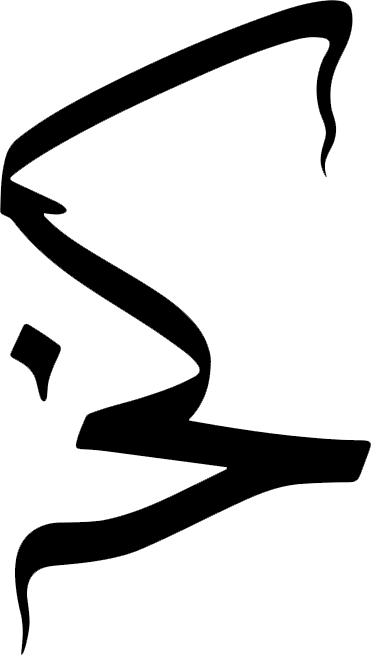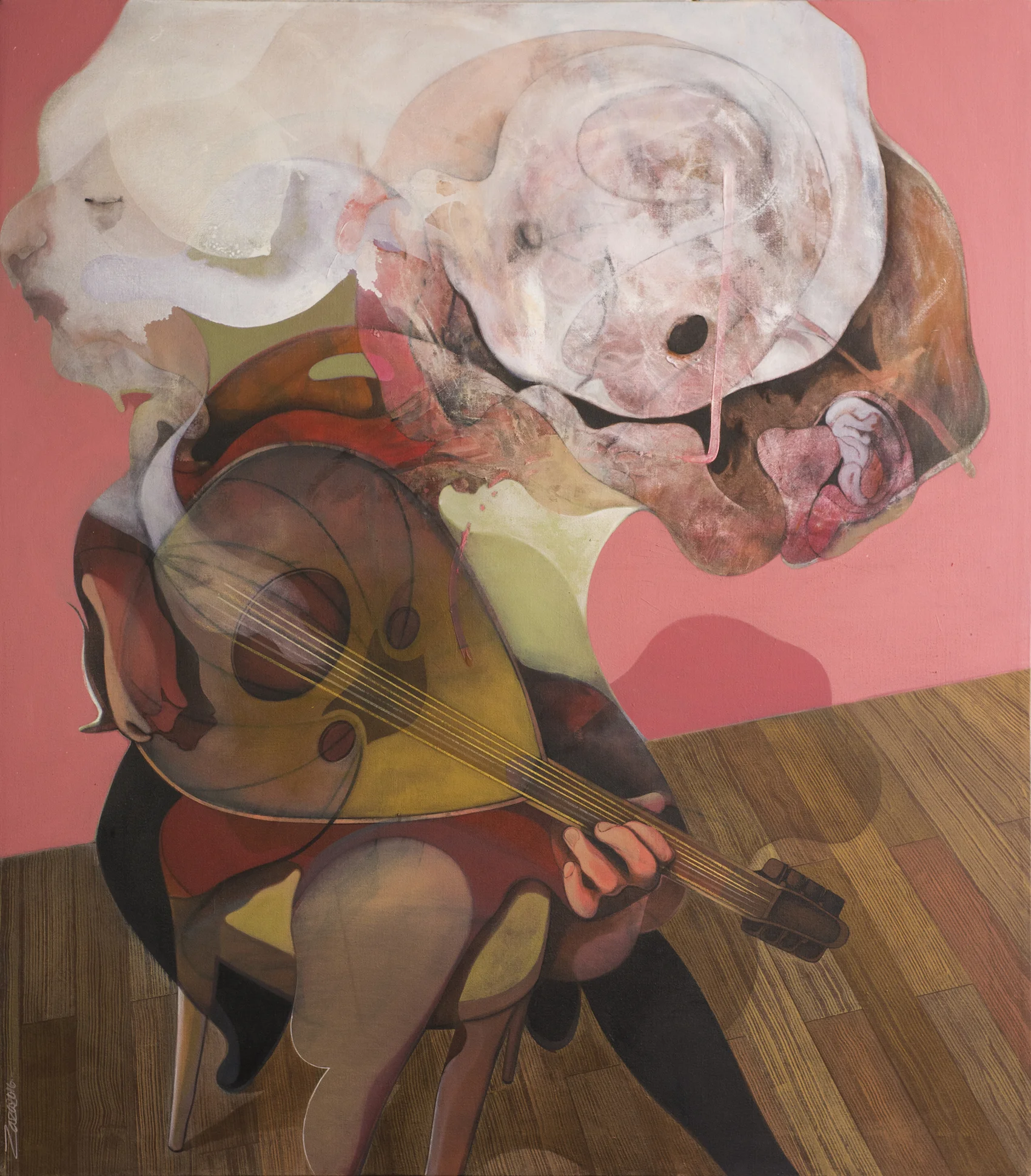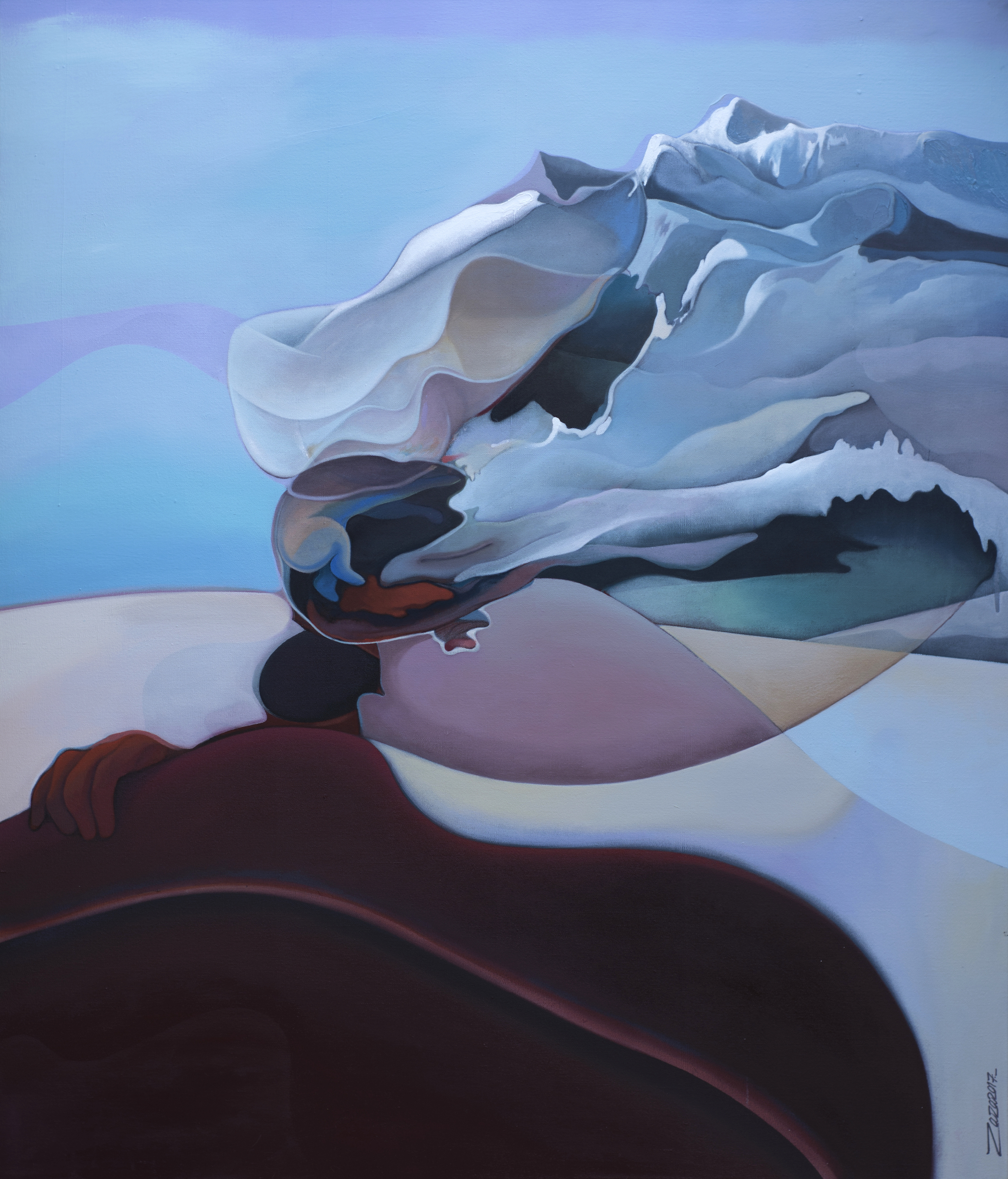Interview: Ungrounded
with Mohammad Zaza
This work appears in Khabar Keslan Issue 2. PASSAGE
The Redman's Journey II. Acrylic on canvas, 200x250cm, 2015.
Zaza explains how his paintings, which seem so otherworldly, are in fact grounded in his conviction that all the elements of creation, both natural and technological, are already expressed in the universe.
Omar Alhashani: What does the body mean for you in your paintings?
Mohammad Zaza: The body represents the complexity of the Creation.
Altawaf in a Parallel Universe. Acrylic on canvas, 200x150cm, 2015
What about the relationship between the body and machine?
The link between the machine and the body is actually very close. The machine is a new, modern tool created by humans and its shape is inspired by their body's members to serve specific functions. More generally, whatever technology is developed by people, it always comes from shapes and ideas that already exist in nature. No new concept will ever come from outside our planet.
Sultanahmet. Acrylic on canvas, 160x170cm, 2014.
How do you conceptualize and execute all the overlapping layers in your paintings?
When I start working on a painting, I have a general impression in my mind about the main, final shape it will take, which comes from the space and the initial abstract lines that I put on the canvas. The construction phase starts with a lot of colors and layers overlapping and ends with specific shapes that are the collaboration between imagination and the initial abstract.
For a viewer, your paintings convey an ever-changing dreamscape. What relationship do your paintings have to reality?
All the artworks come from and are part of reality. My approach, when I try to express an idea on the painting in my own language, is to press reality, the perspective, the far and the close, in one image. By letting the elements fly inside the painting in order to create a new circular gravity, I aim at reinventing the configuration of reality.
A Prayer. Acrylic on canvas, 170x150cm, 2016.
The sense of movement in your work is phenomenal. Why is it important to convey movement?
The movement is at the origin of the shape and, by its impulse, affects the form and the structure of everything. The shape then matches the need for this initial movement. I wish to depict the different stages of this movement and its influence on what surrounds us.
Solo II Istanbul. Acrylic on canvas, 150x170cm, 2016
As an artist, have you seen a significant growth in the Saudi Arabian art scene over the past few years? Do you see any problems with art in Saudi Arabia/Gulf at large?
There has been of course a very big growth in the Saudi art scene in the past five years. This happened thanks to private initiatives, that encouraged the opening of galleries, various art spaces offering workshops and cultural related activities, with a focus on visual art. But very often, art in the Middle East is perceived as something prestigious, instead of people looking at it as a genuine way of expression. A bigger effort should be put into art education in order to develop sensitivity to artistic creation.
With regards to your technical and conceptual approach; which artists, from the MENA region, do you find yourself influenced by?
When I was studying Fine Arts in Aleppo, I was influenced by the thinking and the colors of the Syrian artist Omar Hamdi. The expression of Marwan Kassab Bachi also played a big role in the search of my own work. But now, I cannot say I am influenced by any artist from the Middle East.
A Date with the Creator. Acrylic on canvas, 170x150cm, 2016.
As a traveling artist, how do you stay grounded?
I actually don't feel grounded! I don't aspire to find a stability, I am excited to see how can life still surprise me and bring me to new places, geographically but also in my inner self.
How do you think of home?
It is a place where I can work whenever I want, and where and I don't feel any barriers blocking my artistic expression.
Why is constant migration important to you?
People are mirrors to each other. When I discovered that people are so different from each other, I felt the urge to discover all their faces and lives, as a kind of pursuit to get a larger image of humanity. Seeing all those differences, but at the same time observing the same essence that lies in each of us, feeds me. Although this search is nourishing my art, it is most importantly a personal quest that I want to go after.
A Look at the Mountains. Acrylic and Oil on canvas, 110x130cm, 2017
Do your origins/Does your identity influence your artwork? How so?
MZ: Of course. Whenever I travel, my identity is a window through which I look at the world. It defines my vision, ideas and my position towards other people. This applies to my personal life but also to my art.
Special thanks to Agata Zaza for facilitating this interview.
Mohammad Zaza, a Syrian artist, was born in Riyadh in 1987 and currently resides in Brussels. Growing up in an artistic family, he started drawing and painting at an early age. After completing high school in Saudi Arabia, he moved to Syria in 2006 to study at the faculty of Fine Arts in Aleppo University. He held his first solo exhibition in 2008 and, after his graduation in 2010, was appointed as a painting teacher assistant at the University until 2012. Besides painting on big size canvases, Zaza also works on illustrations and animations. Mohammad has held 10 solo exhibitions across Syria, Saudi Arabia and Turkey, in addition to his regular participation in many group shows and international art fairs.
Omar Alhashani is the founder of Khabar Keslan. Born in Saudi Arabia, raised in Beirut, and graduated from Reed College, Omar now lives between Washington DC and New York City.







